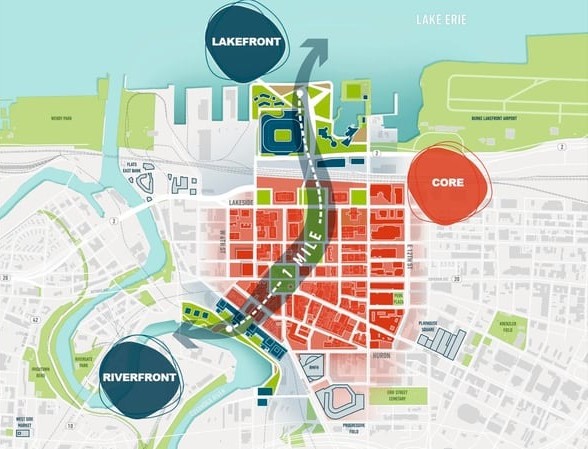Cleveland Mayor Justin Bibb proposed legislation to the Cleveland City Council on Jan. 9, requesting permission to implement a large-scale Tax Increment Financing program (TIF). This kind of monetary plan has never been executed in Cleveland before. The program’s main goal is to revitalize the city’s isolated and abandoned downtown waterfronts on the Cuyahoga River and Lake Erie, using future property tax increases for funding.
The submitted ordinance states that the program will “implement a tax increment financing program under the TIF Act to create the ‘Shore-to-Core-to-Shore TIF District’ to create, capture, and leverage growth in Cleveland’s Downtown and the near west side to benefit all Clevelanders, support robust public infrastructure investments to strengthen waterfronts and Downtown, and fund investments in parks and recreation throughout Cleveland’s neighborhoods.”
According to Bibb, if the city significantly invests in public infrastructure along the Cuyahoga River and Lake Erie waterfronts, it will spur economic growth and create billions of dollars that would otherwise not be possible.
Earlier this month the City Council reviewed and amended the proposal.
Council President Blaine Griffin stated that he wants to guarantee that half of the funds gathered through this project will be used to help enhance city neighborhoods. While Bibb and his team agree that some of this revenue should be utilized to improve Cleveland’s neighborhoods, they say it is too early to determine exactly how much.
Over the next 42 years, Bibb predicts that the Downtown TIF program will bring in between $3.3 billion and $7.5 billion. To promote future growth and reverse decades of decline, he believes that the majority of the funds should be reinvested in the Downtown and waterfront areas and central business district.
After a series of discussions and the exchange of potential numbers, the council agreed to drop their ask from 50% to 35%.
The amount that city government officials may spend on waterfront and Downtown upgrades has not been disclosed, and the TIF district’s potential earning power is still unknown. As a result, it is uncertain how much “excess revenue” would actually be available. Because of this, both Bibb and Griffin are seeking community benefits agreements with developers to provide neighborhoods with immediate financial support.
Once the budget hearings are concluded by the end of the month, the TIF district legislation will proceed through City Council hearings.


